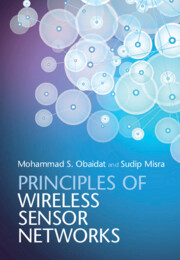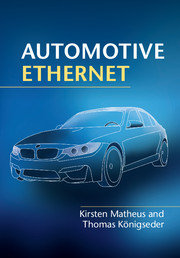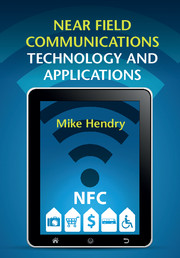Refine search
Actions for selected content:
48229 results in Computer Science

Principles of Wireless Sensor Networks
-
- Published online:
- 05 December 2014
- Print publication:
- 04 December 2014

Automotive Ethernet
-
- Published online:
- 05 December 2014
- Print publication:
- 27 November 2014

Near Field Communications Technology and Applications
-
- Published online:
- 05 December 2014
- Print publication:
- 18 December 2014

Mining of Massive Datasets
-
- Published online:
- 05 December 2014
- Print publication:
- 13 November 2014
Modules over relative monads for syntax and semantics
-
- Journal:
- Mathematical Structures in Computer Science / Volume 26 / Issue 1 / January 2016
- Published online by Cambridge University Press:
- 05 December 2014, pp. 3-37
-
- Article
- Export citation
Relating timed and register automata†
-
- Journal:
- Mathematical Structures in Computer Science / Volume 26 / Issue 6 / September 2016
- Published online by Cambridge University Press:
- 05 December 2014, pp. 993-1021
-
- Article
- Export citation

The Computing Universe
- A Journey through a Revolution
-
- Published online:
- 05 December 2014
- Print publication:
- 08 December 2014
Characterizing co-NL by a group action
-
- Journal:
- Mathematical Structures in Computer Science / Volume 26 / Issue 4 / May 2016
- Published online by Cambridge University Press:
- 05 December 2014, pp. 606-638
-
- Article
- Export citation
9 - Performance evaluation of wireless sensor networks
-
- Book:
- Principles of Wireless Sensor Networks
- Published online:
- 05 December 2014
- Print publication:
- 04 December 2014, pp 200-221
-
- Chapter
- Export citation
1 - Introduction
-
- Book:
- Vehicular Networking
- Published online:
- 18 December 2014
- Print publication:
- 04 December 2014, pp 1-11
-
- Chapter
- Export citation
Frontmatter
-
- Book:
- Vehicular Networking
- Published online:
- 18 December 2014
- Print publication:
- 04 December 2014, pp i-iv
-
- Chapter
- Export citation
10 - Security issues in wireless sensor networks
-
- Book:
- Principles of Wireless Sensor Networks
- Published online:
- 05 December 2014
- Print publication:
- 04 December 2014, pp 222-247
-
- Chapter
- Export citation
2 - Intra-vehicle communication
-
- Book:
- Vehicular Networking
- Published online:
- 18 December 2014
- Print publication:
- 04 December 2014, pp 12-37
-
- Chapter
- Export citation
7 - Security and privacy
-
- Book:
- Vehicular Networking
- Published online:
- 18 December 2014
- Print publication:
- 04 December 2014, pp 302-324
-
- Chapter
- Export citation
6 - Transport protocols for wireless sensor networks
-
- Book:
- Principles of Wireless Sensor Networks
- Published online:
- 05 December 2014
- Print publication:
- 04 December 2014, pp 105-133
-
- Chapter
- Export citation
References
-
- Book:
- Vehicular Networking
- Published online:
- 18 December 2014
- Print publication:
- 04 December 2014, pp 325-347
-
- Chapter
- Export citation
13 - Underwater sensor networks
-
- Book:
- Principles of Wireless Sensor Networks
- Published online:
- 05 December 2014
- Print publication:
- 04 December 2014, pp 319-347
-
- Chapter
- Export citation
Preface
-
-
- Book:
- Vehicular Networking
- Published online:
- 18 December 2014
- Print publication:
- 04 December 2014, pp ix-x
-
- Chapter
- Export citation
Preface
-
- Book:
- Principles of Wireless Sensor Networks
- Published online:
- 05 December 2014
- Print publication:
- 04 December 2014, pp xv-xviii
-
- Chapter
- Export citation
